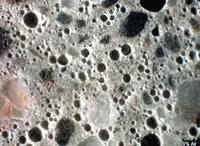Air-entrained concrete is defined as the air intentionally incorporated by means of a suitable agent. The main types of air-entrained agents are:
- Animal and vegetable fats and oils and their fatty acids.
- Natural wood resins, which react with lime in cement to form a soluble resinate.
- Wetting agents such as alkali salts of sulfate and sulphonated organic compound.
The air-entraining agents can be dispensed either as an admixture, (a material added to the mix when the ingredients are fed into the concrete mixer) or else as an addition to the cement, in which the agent is interground with the cement in fixed proportion. The air entraining agents represent between 0.005 to 0.05 percent of the weight of the cement. But to facilitate the dispensing operation, a solution of the agent in water is usually made up.

Air-entrained Concrete Advantages
Entrained air produces discrete cavities in the cement paste and therefore reduces passage of capillary water. It improves the workabillty because the air bubbles kept special by the surface tension, act as fine aggregate of low surface friction and considerable elasticity. Air entrainment of concrete reduces segregation, bleeding, permeability and formation of laitance. But if lowers the density of the concrete then it is liable to shrinkage on drying. Air entrained concrete is frost resistant. This type of concrete is mainly recommended for used in dams, bridges , tunnels and for roads in extremely cold countries and sulfate bearing soils.
There are some disadvantages along with the advantages of air-entrained concrete. For every 1% increase in air, the compressive strength of concrete will be reduced by 2-6%.

